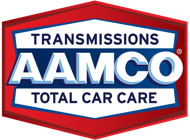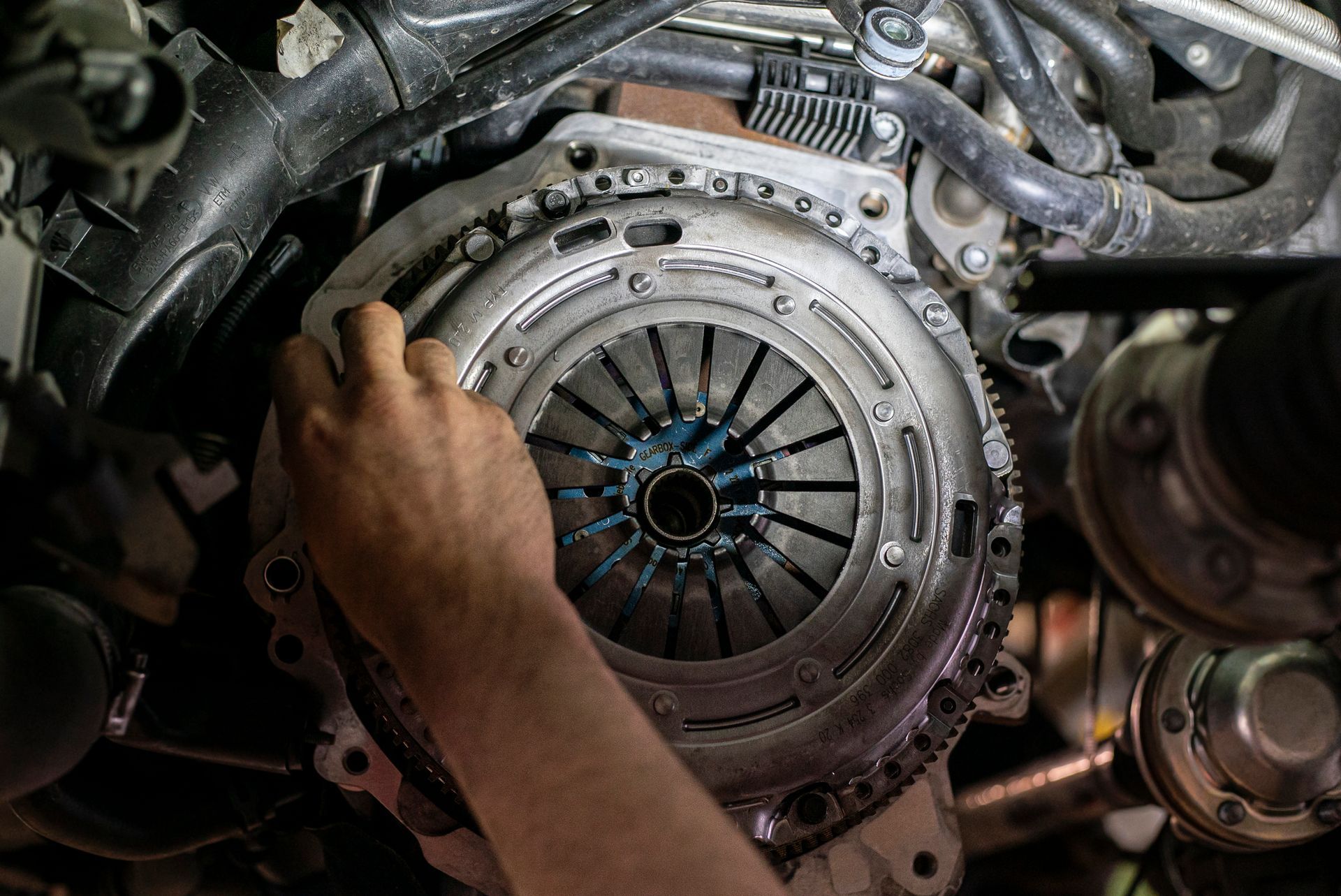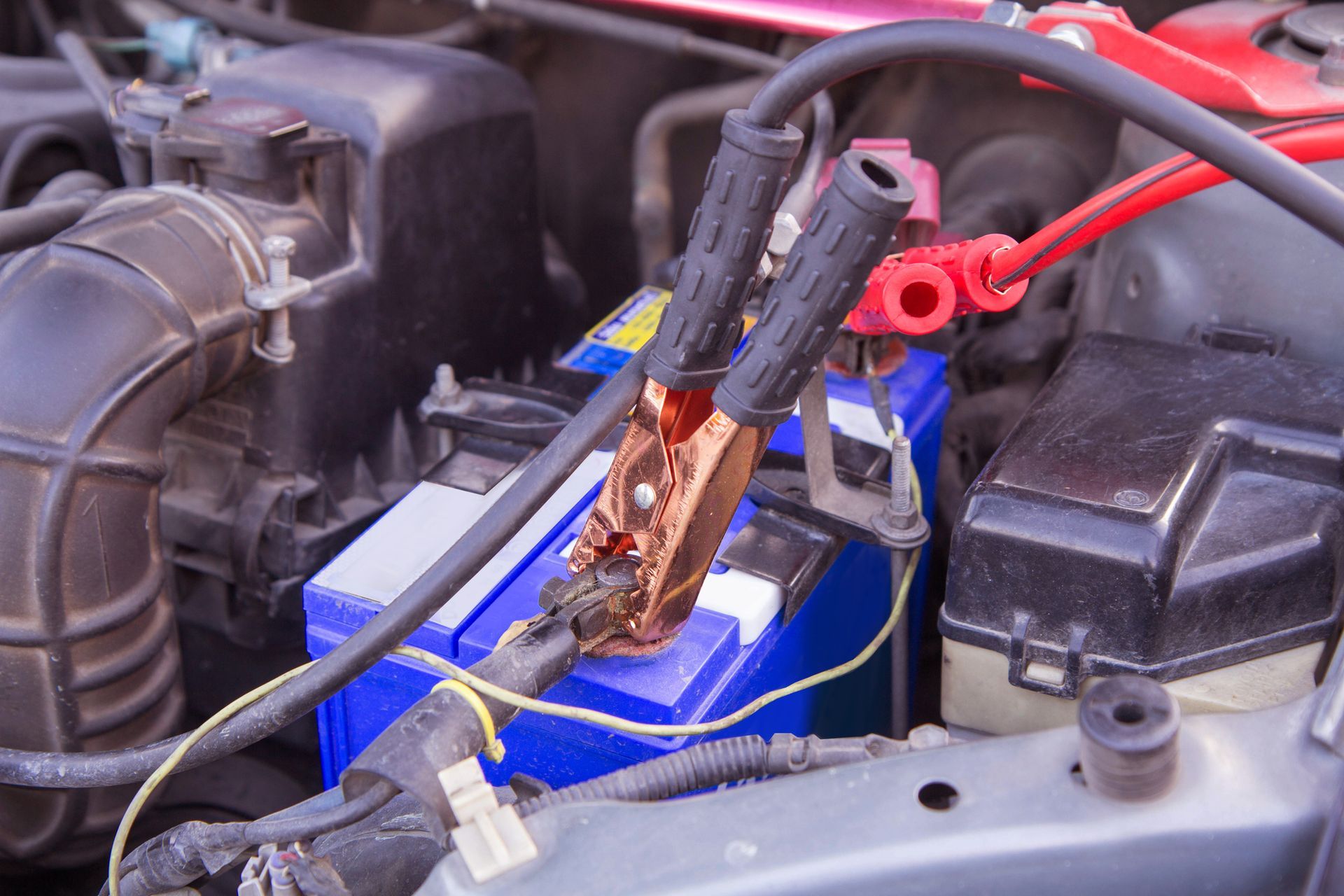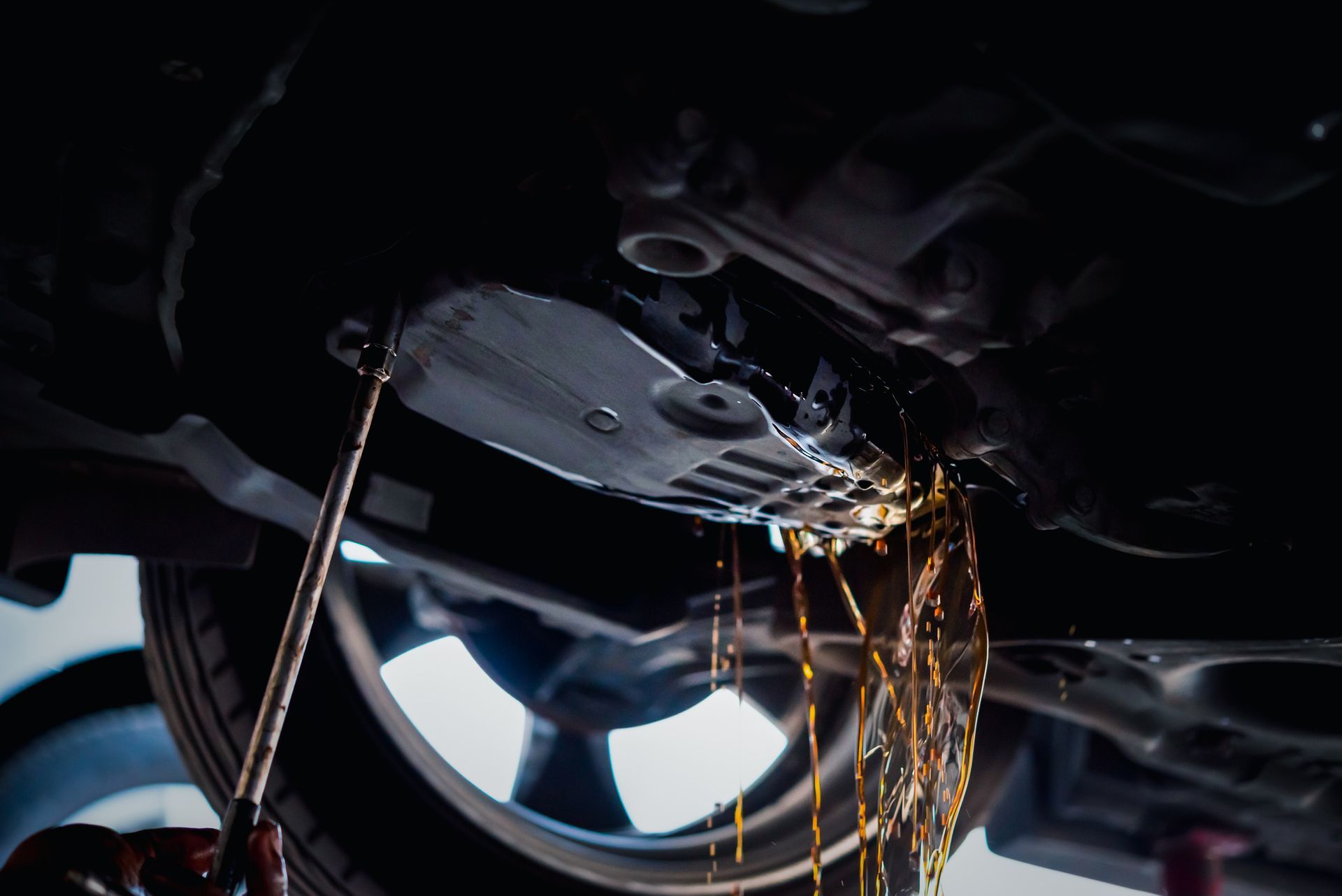AAMCO - TOTAL CAR CARE
AAMCO Centers of Greater Utah
Trust the experts at AAMCO to care for everything in, on and under your car!
TRUST THE EXPERTS AT AAMCO TO CARE FOR EVERYTHING IN, ON AND UNDER YOUR CAR
A car is like an old friend and you need to trust someone to keep your old friend running right and to repair her when she's not. You've trusted the expert technicians at AAMCO for over 50 years to service the most complicated system in your car so you know you can trust us for all your car care needs - from oil changes to tune-ups to services that will keep your car in warranty and everything in, on or under your car. For more information on our auto repair services, see below:

CHECK ENGINE LIGHT SERVICE
When the light comes on, turn to AAMCO to check it out and get the repairs you need to get back on the road - lights out and worry-free! Reading the codes from your car's computer system is similar to a doctor measuring your blood pressure when you schedule a visit. High blood pressure doesn't tell the doctor what is wrong with you it simply lets the doctor know there is something wrong and points him or her in the right direction to find out what it is. Just like the CHECK ENGINE LIGHT codes tell your AAMCO technician there is something wrong and points him or her in the right direction, too. If the code indicates a problem with your O2 (oxygen) sensor system, it doesn't necessarily mean you need a new O2 sensor. Additional diagnostics pinpoints the exact cause of the "trouble" code so you don't pay for parts or services you don't need. Be wary of garages that read your code and tell you immediately that you need a major repair.

MULTI-POINT INSPECTION
AAMCO has become one of the most trusted names in car care. To earn this trust, we ensure that any car that comes into one of our locally owned AAMCO centers gets a complete Multi-Point Inspection to make sure there are no safety or drivability issues that could leave you and your family stranded or at risk. Whether you come in for an oil change or a rebuilt transmission, you know that when you pull away from an AAMCO center, your car has been thoroughly checked for any potential problems. The AAMCO Multi-Point Inspection is a thorough review of all major systems in your car and a check to make sure you are completely up to date on recommended factory maintenance.

BRAKES
Your brake system is a critical safety feature in your car, truck or SUV. Annual brake checks and proper maintenance are important in order to ensure your safety and to avoid costly failures to the brake system. It starts with a FREE check at your locally owned AAMCO center. Your AAMCO expert technician will examine the entire braking system pads/shoes, hydraulic fluids, rotor/drum wear, calipers and wheel cylinders, brake hardware, hoses and lines, master cylinder, and the anti-lock system for vehicles so equipped.

FACTORY RECOMMENDED MAINTENANCE
If you're like many drivers, you may follow the factory maintenance schedule while your car or truck is under warranty. Unfortunately, once your warranty expires, it's easy to let proper maintenance slip, just when it's most critical! Automotive manufacturers know that a well maintained car, truck or SUV increases owner satisfaction because the vehicle is more dependable and will last longer. That's why the manufacturer ("factory") creates detailed maintenance schedules outlining specific operations to be performed on various components and systems. This is done at different mileage intervals to ensure proper operation and prevent premature wear. Your vehicle's manufacturer also indicates which services are required to maintain the factory warranty and extended warranty. The experts at AAMCO know your car like your dealer and can provide the maintenance services you need. We're here to help you keep in warranty or keep track of your maintenance needs long after your car is out of warranty.

OIL, LUBE & FILTER CHANGE
AAMCO is your one-stop shop for all of your car, truck or SUV’s repairs and maintenance needs. From the most basic services, like changing oil, fluids and filters, to the most complicated issues, like transmission repair, AAMCO’s expert techs have you covered. We make getting an oil change quick, easy and cost-effective with convenient online appointment scheduling and great money saving special offers to keep you and your family safe on the road. An AAMCO Full Service Oil & Filter Change also includes our comprehensive Vehicle Courtesy Check® performed by our expert technicians to ensure all major systems in your vehicle are in good working order.

A/C SERVICE
Before summer begins or if you're A/C is blowing hot air, come to a participating AAMCO center for a FREE check. We'll visually inspect hoses, lines, seals and other components for leaks, check temperature readings, check that your compressor is operating properly and inspect the drive belt for cracks or damage. You may simply need a recharge of the refrigerant or the inspection could call for other service, like a new compressor. Plus, your air conditioning belt drives many other components in your vehicle, meaning a broken belt can have a much worse impact than simply an uncomfortable trip. It takes an expert to tell, so take your car to AAMCO and let the experts give you the peace of mind knowing that your vehicle will keep you cooler and safer.

TUNE-UP SERVICE
A properly tuned car, truck or SUV can improve your gas mileage and performance, while improving our environment. With today's gas prices, having your car inspected annually to determine if your vehicle could benefit from a tune-up is a great way to save money on gas and keep your car performing at its best longer. The AAMCO Tune-up service includes inspecting and adjusting all of the systems in your vehicle that contribute to fuel combusting efficiently.

RADIATORS / COOLING SYSTEM SERVICE
Did you know that overheating is the most common cause of mechanical breakdowns on the road? And that overheating can cause severe damage to the engine and the transmission? Maintaining your vehicle's radiator, fluids and cooling system is essential to keeping you and your old friend on the road. Coolant (anti-freeze) protects your engine from overheating and from freezing. The coolant's effectiveness can diminish over time and lose many of its protective properties, causing your radiator to rust and corrode. The cooling system itself can get clogged with built-up deposits from oil, grease, scale, hose decomposition and other materials.

EXHAUST & MUFFLERS
Whether your exhaust is blowing smoke or making noise or anything in between, AAMCO provides complete exhaust services. The emission and exhaust system starts at the engine of your car, truck or SUV and runs through exhaust pipes connected to your engine cylinders, to the oxygen sensors and the catalytic converter and then to the muffler and to the tailpipe.

SHOCKS / STRUTS
With AAMCO's shocks and struts services, it's a smooth road ahead. Your vehicle's suspension system helps provide a comfortable and safe ride, ensuring your wheels stay in contact with the road. If your ride's gotten bumpy, it's time to have your suspension system checked out by the expert technicians at AAMCO. Signs of bad shocks or struts or worn springs include a bouncy or uncomfortable ride, bottoming out, the front end of the vehicle diving or loss of control while making a sudden stop, the vehicle swerving more than normal while changing lanes and a vehicle that sags in the front or the rear. If you're experiencing any of these driving symptoms, bring your car or truck to AAMCO for our free 36-point ProtectCheck inspection and we'll help identify whether you need new shocks, struts or other suspension service.



